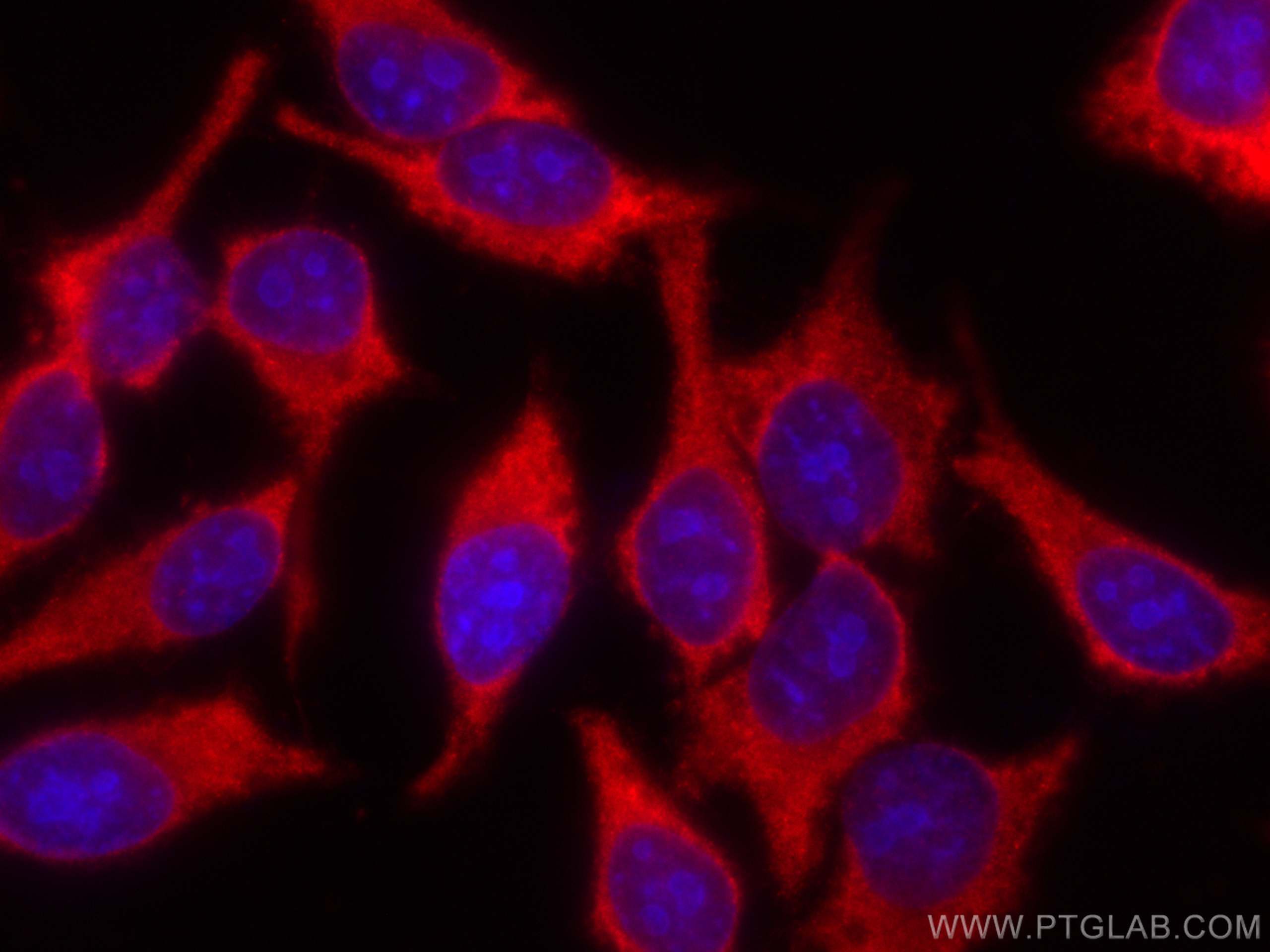AMPD2 Monoklonaler Antikörper
AMPD2 Monoklonal Antikörper für IF/ICC
Wirt / Isotyp
Maus / IgG2b
Getestete Reaktivität
human, Maus, Ratte
Anwendung
IF/ICC
Konjugation
CoraLite®594 Fluorescent Dye
CloneNo.
2C4C1
Kat-Nr. : CL594-67430
Synonyme
Geprüfte Anwendungen
| Erfolgreiche Detektion in IF/ICC | HepG2-Zellen |
Empfohlene Verdünnung
| Anwendung | Verdünnung |
|---|---|
| Immunfluoreszenz (IF)/ICC | IF/ICC : 1:50-1:500 |
| It is recommended that this reagent should be titrated in each testing system to obtain optimal results. | |
| Sample-dependent, check data in validation data gallery | |
Produktinformation
CL594-67430 bindet in IF/ICC AMPD2 und zeigt Reaktivität mit human, Maus, Ratten
| Getestete Reaktivität | human, Maus, Ratte |
| Wirt / Isotyp | Maus / IgG2b |
| Klonalität | Monoklonal |
| Typ | Antikörper |
| Immunogen | AMPD2 fusion protein Ag8433 |
| Vollständiger Name | adenosine monophosphate deaminase 2 (isoform L) |
| Berechnetes Molekulargewicht | 879aa,101 kDa; 798aa,92 kDa |
| Beobachtetes Molekulargewicht | 101 kDa |
| GenBank-Zugangsnummer | BC007711 |
| Gene symbol | AMPD2 |
| Gene ID (NCBI) | 271 |
| Konjugation | CoraLite®594 Fluorescent Dye |
| Excitation/Emission maxima wavelengths | 588 nm / 604 nm |
| Form | Liquid |
| Reinigungsmethode | Protein-A-Reinigung |
| Lagerungspuffer | PBS with 50% glycerol, 0.05% Proclin300, 0.5% BSA |
| Lagerungsbedingungen | Bei -20°C lagern. Vor Licht schützen. Nach dem Versand ein Jahr stabil. Aliquotieren ist bei -20oC Lagerung nicht notwendig. 20ul Größen enthalten 0,1% BSA. |
Hintergrundinformationen
Adenosine monophosphate deaminase (AMPD) catalyzes the deamination of AMP to IMP and plays an important role in the purine nucleotide cycle. Three AMPDs are present in mammals named AMPD1/2/3. AMPD2 is the main activity present in adult human liver and is widely expressed in non-muscle tissues and cells (PMID: 8526848). AMPD2 has some isoforms with the molecular mass of 88-101 kDa.
Protokolle
| PRODUKTSPEZIFISCHE PROTOKOLLE | |
|---|---|
| IF protocol for CL594 AMPD2 antibody CL594-67430 | Protokoll herunterladen |
| STANDARD-PROTOKOLLE | |
|---|---|
| Klicken Sie hier, um unsere Standardprotokolle anzuzeigen |


